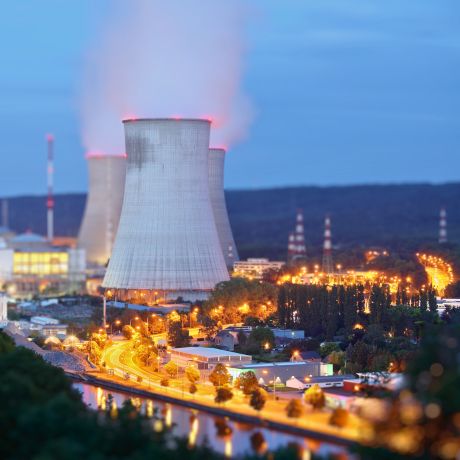Stainless steel 17-7PH - S17700 - 1.4568 - AISI 631 - X7CrNiAl17-7
17-7PH is a semi-austenitic precipitation-hardening stainless steel. This chromium-, nickel- and aluminium-based alloy offers good fatigue resistance and high hardness, while its corrosion resistance is moderate. Also known as AMS 5528, 1.4568 or AISI 631, it is suitable for applications requiring high elasticity, such as springs, diaphragms, clips, and similar components.
Available shapes :
Order 17-7PH Online
Select the desired form, standard, or specification and place your order with one click. A member of our sales team will contact you promptly to finalize your order.
General Introduction to 17-7PH
The 17-7PH is one of the most formable precipitation-hardening (PH) stainless-steel alloys. Austenitic in condition A, it is therefore less magnetic than other PH grades and can be easily formed.
This grade hardens to high strength levels using relatively low heat-treatment temperatures (compared with conventional quenches), which minimizes distortion. Once heat treated, this alloy offers outstanding mechanical properties up to 482 °C (900 °F), although the most stringent standards generally recommend use up to 316 °C (600 °F). Beyond that, over-ageing can occur.
Heat Treatments
The typical heat-treatment process for 17-7PH involves several steps :
- Austenitic conditioning, typically ~1065 °C
- Controlled cooling transforming the austenite into martensite
- Precipitation hardening, heating to the target temperature
To obtain the highest mechanical properties, the alloy is transformed into martensite by cold reduction (work hardening) in condition C. After fabrication, a single low-temperature heat treatment is carried out to reach condition CH 900, which provides the maximum strengths of 17-7PH.
Whereas 17-4PH steel, mainly martensitic, hardens by precipitation thanks to the addition of copper, 17-7PH, semi-austenitic, becomes martensitic only after thermal transformation (or cold work) before ageing. Its precipitation hardening is achieved thanks to aluminium.
Mechanical and Chemical Properties
Before heat treatment, 17-7PH attains a minimum tensile strength of 1034 MPa, a yield strength above 1275 MPa and a hardness of 20.5 HRC.
This alloy provides good corrosion resistance in moderately aggressive environments (humidity, weak acids, alkaline solutions) and industrial atmospheres. It remains sensitive to corrosion in marine environments or in the presence of strong acids.
Machinability, Formability and Weldability
The machinability of 17-7PH in condition A is rated at 75 % of B1112. As with many stainless steels, the use of a chip breaker is recommended : long chips complicate machining and can damage the machine. Low cutting speeds and constant feeds limit heating, work hardening and tool wear.
Like steel 301, 17-7PH has excellent formability. Because of its work-hardening rate, an intermediate anneal may be necessary to restore ductility during severe forming operations.
The weldability of 17-7PH is compatible with conventional processes (arc, resistance). An inert shielding gas (argon) is required to limit oxidation of the aluminium contained in the alloy.
Industrial Applications
In the aerospace industry, 17-7PH is commonly used for components requiring reliable elasticity or springback. It is found in the manufacture of flat springs, precision parts, or spring washers (e.g. : Belleville, Grower). wave springs (wave springs), valued for their compactness, fully benefit from the CH 900 treatment that provides the alloy’s maximum mechanical strength.
Chemical composition of 17-7PH
The variations in its chemical composition for aerospace.
| % | Al Aluminium | C Carbon | Cr Chromium | Mn Manganese | Ni Nickel | P Phosphorus | S Sulfur | Si Silicon |
|---|---|---|---|---|---|---|---|---|
| Min. | 0.75 | <0.00 | 16.00 | <0.00 | 6.50 | <0.00 | <0.00 | <0.00 |
| Max. | 1.50 | 0.09 | 18.00 | 1.00 | 7.75 | 0.040 | 0.030 | 1.00 |
Related stainless steel alloys
15-5PH, 1.4545, X5CrNiCu15-5, EZ5CNU15.15
RECTANGULAR BAR, ROUND BAR, PROFILE, SHEET
17-4PH, 1.4548, UNS S17400, AMS 5643, AMS 5622, S17400
SQUARE BAR, RECTANGULAR BAR, ROUND BAR, SHEET
21-09-06, AMS 5561, Nitronic 40, S21900, X2CrMnNi21-6-9, Z4CMN 21-9-6
ROUND TUBE
AISI 301, Z12CN18-07, X12CrNi17-7, X10CrNi18-8
MOTHER COIL, COIL, SHEET
AISI 302, Z12CN18-09
SHEET
AISI 347, X6CrNiNb18-10, Z6CNNb18-10
RECTANGULAR BAR, ROUND BAR, SHEET, ROUND TUBE
AISI 431, APX, X15CrNi17-03, Z15CN17-03
SQUARE BAR, RECTANGULAR BAR, ROUND BAR, SHEET
AISI 446
ROUND BAR
CALE PELABLE
SHEET
CUSTOM 465, MLX17, X1CrNiMoAlTi12-11
ROUND BAR
EZ100CD17
ROUND BAR
EZ12CNDV12
ROUND BAR
EZ15CN17-03
ROUND BAR
EZ1CNDAT12-09, MARVALX12, X1CrNiMoAlTi12-9
ROUND BAR
EZ2NKD18-8-5, MARAGING 250, X2NiCoMo18-8-5
RECTANGULAR BAR
EZ3NCT25, X3NiCrTi25
ROUND BAR, COIL, SHEET (THICKNESS > 6MM)
EZ6CND16-05-01
SQUARE BAR
EZ6NCT25, A286, X6NiCrTi25
SQUARE BAR, RECTANGULAR BAR, ROUND BAR, COIL, WIRE, SHEET
EZ8CND17-04
ROUND BAR
GD223, X50NiMnCr12, Z50NMC12
ROUND BAR
PH13-8Mo, X3CrNiMoAl13-08-02, Z3CND13-08
RECTANGULAR BAR, ROUND BAR
S130
ROUND BAR
S143
ROUND BAR
S143D
ROUND BAR
S144
ROUND BAR
S145
ROUND BAR
X12C13, X12Cr13, AISI 410, 1.4006, Z10C13
ROUND BAR, SHEET
X30Cr13, Z30C13
ROUND BAR
X6Cr17
ROUND BAR
X750
SHEET
Z100CD17
ROUND BAR
Z12CN13
SHEET
Z12CNDV12, JETHETE M152, X12CrNiMoV12
ROUND BAR, SHEET
Z25CNWS22
ROUND BAR
Z2CN18-10, AISI 304L, X1CrNi18-10
RECTANGULAR BAR, ROUND BAR, COIL, WIRE, PROFILE, SHEET, PERFORATED SHEET, PVC SHEET, ROUND TUBE
Z6CND16-05-01, APX4, Z8CND17-04, X4CrNiMo16-5-1
ROUND BAR, SHEET
Z6CNT18-10, AISI 321, X6CrNiTi18-10, X6CNT18-10
SQUARE BAR, RECTANGULAR BAR, ROUND BAR, COIL, SHEET, ROUND TUBE
Key properties
The most remarkable properties of this stainless steel alloy
Tensile Strength
≥ 1034 MPa
Impact Toughness
36.4–37.8 J
Yield Strength
≥ 379 MPa
Brinell Hardness
≥ 229 HB







